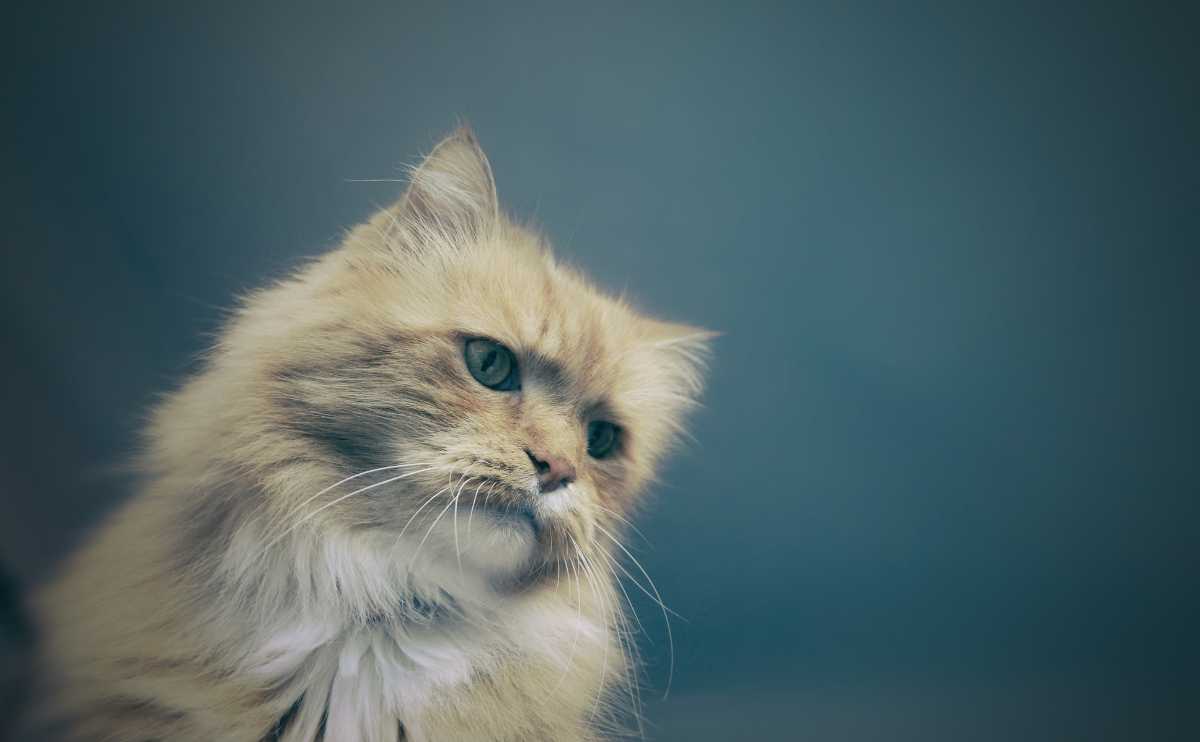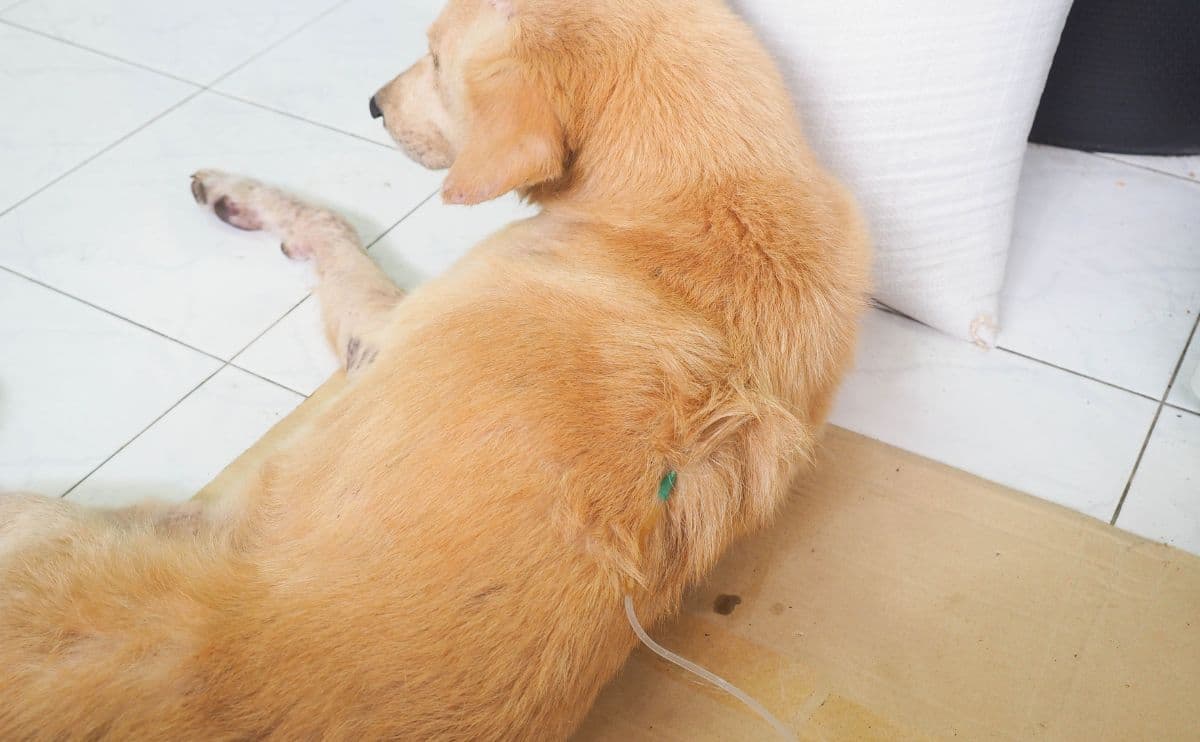When you purchase through links on our site, we may earn a commission. Here’s how it works.

Leila Hadziabdic is a Master’s student in Molecular Microbiology, Microbial Ecology and Immunobiology. Always led by her genuine and deep love for all animals, Leila has been surrounded by pets her whole life. She joined the pet genomics company Basepaws in 2017 after earning her Bachelor’s degree in Genetics. Her job is to research and write feline genetic and health-related content, including this Canine Journal exclusive discussion about rare feline genetic disorders and how Cat DNA tests can help us dig into their health history.
What Is Cat DNA And Why It Matters?
Deoxyribonucleic acid (aka DNA) is the fundamental molecule lying in the base of the living world. It carries the genetic instructions for the development, growth and functioning of organisms. In some cases, due to genetic mutations, certain genetic anomalies may occur which can trigger disease. Such diseases are known as hereditary diseases.
With the help of whole genome sequencing (WGS), we can now not only determine the entire DNA sequence of an organism, but we are also able to identify the anomalies causing the hereditary diseases. The identification of genetic diseases is highly important for the betterment of their timely and accurate diagnosis and treatment.
Common Cat Health Concerns
It is often cited that there are about 250 hereditary diseases identified among cats so far. Some of the common hereditary feline diseases are polycystic kidney disease (PKD), hypertrophic cardiomyopathy (HCM), diabetes mellitus (DM), feline lower urinary tract disease (FLUTD), progressive retinal atrophy (PRA) and others. These conditions are broadly known, and a lot of research is continuously conducted in efforts to improve their recognition and treatment.
If you are concerned about the costs of treating your pet, you should consider pet insurance. It will cover your expenses when your cat is sick and give you peace of mind that you won’t be hit with unexpected and costly veterinary bills.
This video explains the benefits of pet insurance, including how it can help you best manage your cat’s unexpected woes (plus your pocketbook) in a timely manner when they arise.
10 Rare Cat Diseases
However, there is a high number of identified rare hereditary feline disorders which are generally underserved. Despite a low incidence of these conditions in the feline population, their combined impact is still very significant and this is typically not sufficiently addressed. That is why today we chose ten such diseases in efforts to take them apart and reflect on their clinical significance.
1. Primary Glaucoma
Glaucoma is a group of eye diseases characterized by the accumulation of aqueous humour (fluid from the front part of the eye, right behind the lens). This accumulation creates pressure on the optic nerve which causes nerve damage and potentially leads to partial or complete vision loss. Glaucoma can affect one or both eyes and can be primary or secondary.
Primary glaucoma is inherited and it is a much less common than secondary glaucoma which is acquired post-birth. Primary glaucoma is often breed-specific, with Burmese and Siamese cats at highest risks from it. This type of glaucoma inevitably affects both eyes.
The clinical signs include cloudy eyes, squinting, dilated pupils and behavioral changes.
2. Feline Cutaneous Asthenia
Cutaneous asthenia is a rare inherited skin disorder in which the cat’s skin is characterized by abnormal elasticity, stretching and improper healing. Even stroking these cats can cause their skin to stretch and tear.
There are two genetic traits associated with the condition. The first trait is a recessive one, and the second one is dominant.
The recessive mutation has been identified in Siamese cats and related breeds. As it is recessive, it will only show in homozygous forms (organisms that carry two copies of the defective gene), while heterozygous forms (organisms with two different copies of the gene – one defective and one healthy) will remain unaffected. In this type of cutaneous asthenia, there is a deficiency or structural abnormality of the enzyme called procollagen peptidase. This enzyme is in charge of modifying procollagen into collagen. Due to is insufficient functioning, the healthy formation of collagen fibrils is disrupted which results in pathology. The clinical signs of recessive cutaneous asthenia include extreme skin hyperextensibility.
The second genetic trait linked to the condition is an autosomal dominant mutation resulting in abnormal packaging of type I collagen. In this type of cutaneous asthenia there is an incorrect production of collagen type V which plays a role in the packaging of collagen type I. As a result, collagen fibrils are abnormally sized and spaced which leads to a formation of a very thin dermis. This trait is lethal in homozygous forms, while heterozygous forms can live with the condition. The clinical signs include very soft, velvety skin that is very easy to tear. Sometimes there is also abnormal joint mobility.
3. Niemann-Pick Disease Type C (Sphingomyelinosis)
Niemann-Pick disease or sphingomyelinosis is a group of inherited lipid storage disorders. Niemann-Pick disorders are characterized by an accumulation of harmful levels of the sphingolipid called sphingomyelin within the cells of the nervous system, liver, spleen, kidneys, lungs and intestines. This accumulation is caused by insufficient levels or activity of an enzyme called sphingomyelinase.
While there are several described types of Niemann-Pick, in cats only Niemann-Pick type C has been genetically identified so far. Type C is caused by an autosomal recessive mutation in the Niemann-Pick C gene (NPC1). This means that the condition is expressed only in the homozygous forms. Heterozygous cats will remain unaffected. Niemann-Pick has been described in domestic shorthair and Siamese cats.
Clinical signs of the condition include issues with balance and coordination, head tremors, hypermetria and splayed legs.
4. Tetralogy Of Fallot
Tetralogy of Fallot is a congenital defect of the heart that involves four abnormalities: a ventricular septal defect (a hole between the two ventricles), pulmonic stenosis (obstruction of blood flow through the pulmonary valve), an overriding aorta, and right ventricular hypertrophy (thickening of the heart muscle).
It is speculated that this disease is genetic, but the genetic factors have yet to be identified. The clinical symptoms include fainting, weakness, shortness of breath and cynosis.
5. Hemophilia
Hemophilia is a group or rare hereditary bleeding disorders in which the cat’s blood doesn’t clot appropriately in case of an injury. Although uncommon, hemophilia is a severe condition that can be inborn or acquired. Best known variants of congenital hemophilia in cats are hemophilia A and B and Hageman deficiency. Some cat breeds have the higher genetic predisposition to these conditions. It is suspected that Maine coon may have such predisposition, and it is confirmed in British shorthairs and Devon Rex’.
Hemophilia A is caused by a dominant mutation in the gene for coagulation factor VIII, and hemophilia B by a dominant mutation in the gene for coagulation factor IX. Both of these genes are located on the X chromosomes. Hageman deficiency is an autosomal disorder and in humans, the gene coding for this factor is identified as F12.
The clinical symptoms of hemophilia are similar to all types. Hemophiliacs often show weakness, fever, lack of appetite, lameness, swelling of the joints, hematomas (soft swellings), bloody stool and vomit, rectal, vaginal and nose bleeding.
6. Pelger-Huët Anomaly
Pelger-Huët anomaly is an inherited disorder characterized by a white blood cell type known as a neutrophil whose nucleus is hyposegmented. Heterozygous forms are typically clinically neutral, although their neutrophils make me mistaken as immature.
It is speculated that this anomaly is caused by an autosomal dominant mutation. In heterozygous forms, the mature neutrophils resemble bands and metamyelocytes but there is no immunodeficiency nor predisposition to infections. There is also no disruption of the functioning of leukocytes. The homozygous forms, on the other hand, are lethal in utero. The anomaly is usually discovered by accident when routine blood tests are being run.
7. Chediak-Higashi Syndrome
Chediak-Higashi syndrome is a rare genetic disorder characterized by incomplete oculocutaneous albinism, prolonged bleeding and recurrent and frequent infections. The syndrome is found in Persian cats, humans, cattle, mink, blue and silver foxes, mice and killer whales.
Chediak-Higashi is an autosomal recessive disease, meaning it is shown only in homozygous forms. It is caused by a mutation in the CHS1 gene. The mutation may lead to melanin deficiency in the eyes resulting in oculocutaneous albinism and platelet storage pool deficiency resulting in prolonged bleeding. Cats affected with this syndrome are also at high risk of frequent infections.
The clinical symptoms include extreme light sensitivity, excessive blinking, eye watering, cataracts, chronic infections, depigmentation of eyes and skin and others.
8. Primary Hyperoxaluria
Primary hyperoxaluria (PH) is a rare, inherited disease characterized by excessive excretion of oxalate. In humans, this disease is a result of mutations in the alanine glyoxylate aminotransferase gene (primary hyperoxaluria type 1) or in the glyoxylate reductase (GRHPR) gene (primary hyperoxaluria type 2).
In cats, primary hyperoxaluria has been identified mimicking human PH type 2. It was described with an autosomal recessive mode of inheritance. In a study published by Goldstein et al. in 2009, one recessive allele of the five variants of the feline GRHPR gene has been identified as the cause of PH2 in cats. Cats carriers of this defective GRHPR allele are predisposed to calcium oxalate stone formation, which is thought to be the most common stone in the kidneys, ureters, and bladders of cats in the United States and Europe.
Studying this condition in cats is not only important for the betterment of cat care and health, but it may also serve as a good model for the improvement of the human disease diagnosis and treatment.
9. Hypertrophic Muscular Dystrophy
Hypertrophic muscular dystrophy is a rare, recessive, X-linked inherited condition. This is the most common form of muscular dystrophy identified in cats which predominantly affects males (because they carry one single copy of the X chromosome and can, therefore, carry only one copy of the gene).
In this disease, muscles are deficient in a protein called dystrophin. This makes the muscles very weak which sometimes leads to excessive muscling (big muscles) – a compensatory response. Common clinical signs are overall weakness, stiffness, and a ‘bunny-hopping’ gait.
10. Feline Myotonia Congenita
Feline myotonia congenita (MC) is a hereditary neuromuscular disorder affecting skeletal muscles in the domestic shorthair cats. In this disorder, there is a delayed relaxation of contracted muscles (both voluntarily or reflexively contracted muscles).
MC in cats is caused by a recessive autosomal mutation in the CLCN1 gene. This results in the production of malfunctioning transmembrane proteins. These proteins act as ion channels and are critical for the healthy functioning of skeletal muscle cells as they regulate the transport of ions across cells. When these proteins are malfunctioning, the membrane of muscle cells is very excitable and remains active even once the stimulus is long gone. This is what causes the muscle relaxation period to be prolonged.
Clinical symptoms usually include restricted jaw opening, halitosis, gingivitis, the dribbling of saliva, dental calculus accumulation, loose teeth and poor grooming habits.
Video: About Basepaws
Learn more about Basepaws DNA tests, how it works and what you can find out about your cat’s health with the results.
A Healthy Cat Is A Happy Cat
The ten inherited feline disorders briefly described above are all relatively rare diseases affecting small portions of the feline population. However, their clinical significance is high regardless of the low incidence.
We hope that with this brief insight we offered you a comprehensive understanding of these often overlooked and underserved feline health disorders. To ensure your cat is covered should an illness or other emergency affect your furry friend, learn all about pet insurance and why it’s critical to insure your cat.
Tagged With: Cats

